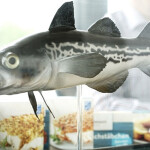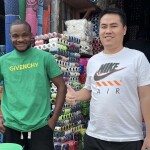Seafood prices continued to decline in March 2024, but the drop is not yet translating to higher sales.
Frozen seafood sales fell 6.4 percent by volume and 5.7 percent by value to USD 870 million (EUR 819 million), and fresh seafood sales dropped 3.2 percent by volume and 4.6 percent by value to USD 819 million (EUR 771 million), according to Circana data analyzed by Lakeland, Florida, U.S.A.-based 210 Analytics. Only shelf-stable seafood sales increased in March, and that was by 0.3 percent in value to USD 335 million (EUR 315 million), though sales by volume declined 2 percent.
Overall fish and seafood prices declined 2.6 percent in March 2024 versus March 2023, according to the U.S. Bureau of Labor Statistics’ Consumer Price Index. Fresh fish and seafood prices dropped 3.1 percent, frozen fish and seafood prices declined 2.6 percent, processed fish and seafood prices fell 2 percent, and shelf-stable seafood prices stayed the same.
The shrinkage in sales occurred even as most seafood prices dropped. Circana data indicates frozen seafood was 7.5 percent less expensive in March 2023 year over year, while fresh seafood prices fell 1.4 percent Only shelf-stable seafood prices incresased, rising 2.4 percent.
However, at an average price of USD 9.43 (EUR 8.88) per pound for fresh seafood, prices are “significantly” higher than the average price per pound for the three biggest animal proteins – chicken at USD 3.07 (EUR 2.89) per pound, pork at USD 3.14 (EUR 2.96) per pound, and beef at USD 6.42 (EUR 6.04) per pound, according to 210 Analytics Principal Anne-Marie Roerink.
And consumers may be feeling sticker shock on certain seafood species. For instance, fresh lobster prices shot up 16 percent in March versus a year ago, to USD 10.19 (EUR 9.59) per pound on average.
Seafood prices continue to be lower than overall food inflation, which increased by 2.2 percent in March compared to last March, according to the CPI. While food at home prices inclined only 1.2 percent, food away from home prices shot up 4.2 percent.
“The new CPI data reflects what most consumers will have noticed on any recent trip through the drive-through or opening up a menu – the ongoing increases in restaurant prices,” Roerink said. “The restaurant rate of inflation has been outpacing retail and what’s important to keep in mind is that this is a higher percentage over an already higher ring to start with, if you think about it from a cost per capita point of view. That means the home-cooked meal is becoming even more of a solution to cash-strapped consumers.”
As a result, seafood will likely remain a …








